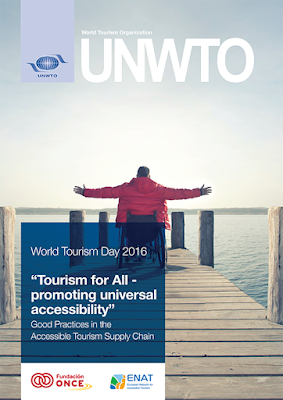Dear colleagues,
The Housing Board Project SkyVille@Dawson has bagged the Singapore's Building & Construction Authority's (BCA) highest award for inclusive design.
The housing estate in Dawson Road is one of three Platinum winners of the BCA Universal Design Mark 2016, and among 25 total winners that range from residential projects to malls and parks.
The housing project has many Universal Design & User Friendly features from ramps incorporated into main routes around the estate to the large light switches that are easy to reach within flats.
"Universal design is about addressing the needs of as many people as possible, including persons with disabilities and the elderly," said BCA's acting group director for building plan and management, Mr Teo Orh Hai.
This includes physical features such as ramps and corridors wide enough for wheelchairs, as well as facilities catering to all ages, such as playgrounds that incorporate fitness facilities for older adults.
Universal design also extends to subtler touches such as large, clear signs to help people find their way around, sheltered walkways and adequate seating.
For instance, at Bedok Mall and Bedok Residences - a Gold Plus winner - a large canopy links various forms of transport, from the MRT station and bus interchange to bicycle parking. Plenty of seating is also available throughout the integrated mall and private apartments, giving shoppers and residents places to rest.
Winners received their awards at the annual BCA Awards ceremony on May 26, 2016 at Resorts World Sentosa.
Brief about BCA's Universal Design Awards
To encourage of Universal Design, the BCA initiated the annual BCA UD Awards in 2007 to accord recognition to stakeholders for incorporating user-friendly features in their developments. The BCA UD Awards was replaced by the BCA UD Mark certification scheme in October 2012.
About the BCA UD Mark Certification Scheme
The BCA UD Mark is a voluntary certification scheme launched in October 2012 as an initiative to raise the bar on UD adoption in developments. Since its inception, 94 awards had been given out to deserving projects.
This initiative accords recognition to developments and stakeholders that adopt a user-centric philosophy in their design, operations and maintenance. It also aims to raise greater public awareness towards user-friendly buildings. This scheme allows assessment of projects at design stage, thereby, facilitating the incorporation of UD principles from the onset of project development.
A built development is awarded a display plaque, indicating one of the four UD Mark ratings: Certified, Gold, GoldPLUS or Platinum. For on-going projects, UD Mark ratings is determined based on design and indicated as Certified (design), Gold (design) or GoldPLUS(design).
Benefits of the UD Mark
The BCA UD Mark identifies and distinguishes developments that have gone beyond meeting minimum standards. With the impending silver tsunami, the recognition of best practices in enhancing accessibility and user-friendliness within the development provides the following benefits:
- Improves competitiveness by meeting the varying needs of diverse user groups
- Increase in the number of potential visitors to the development, thereby, generating greater sales and revenue
- Generates a positive effect on the corporate image


 Accessibility: Persons with disabilities & seniors face acute challenges of accessibility in built environments, services, attitudes of society in every day lives, hence feel excluded. No city can be inclusive if it claims growth and development sans its elders & disabled residents. Best practices in these areas were shared & discussed. Mr. Vashishth made a detailed presentation titled "Accessibility in Built Environment for an Inclusive & Smart Habitat in India".
Accessibility: Persons with disabilities & seniors face acute challenges of accessibility in built environments, services, attitudes of society in every day lives, hence feel excluded. No city can be inclusive if it claims growth and development sans its elders & disabled residents. Best practices in these areas were shared & discussed. Mr. Vashishth made a detailed presentation titled "Accessibility in Built Environment for an Inclusive & Smart Habitat in India". 



























